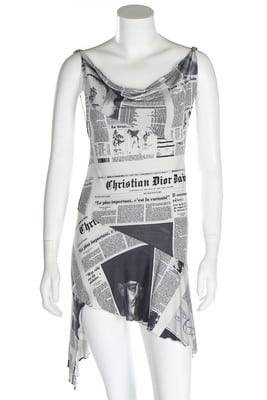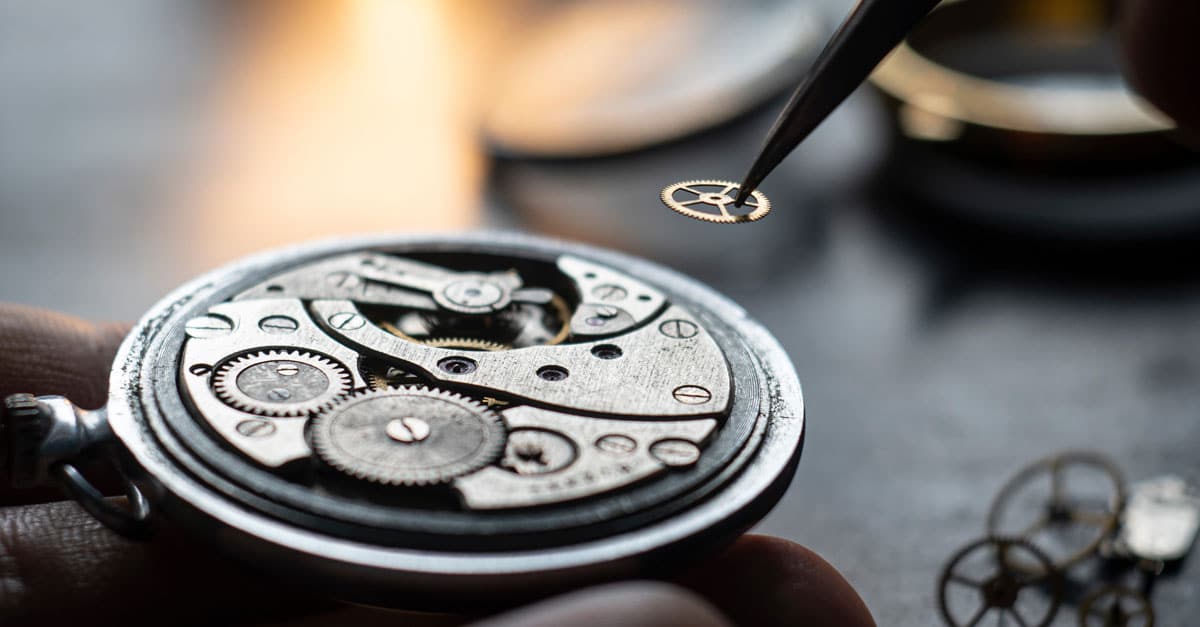The condition is good, and the name is right—in contemporary fashion business, this means value. Sustainability, a crucial factor for Gen Z consumers who are resale-conscious, is one of the factors driving the growth in popularity of vintage clothing.
The Base: Famous Names
Recent sales through the British auction house Bonhams have included a Christian Dior ‘newspaper dress’ from 2000, selling at 15,300 euros, and a 1995 Chanel tweed suit at 5,100 euros. Then there are some very big hitters. One-off pieces by Iris Van Herpen—a robe Bene Gesserit and a robe Aeternus—were sold last year for 75,000 British pounds and 50,000 British pounds, respectively.

The “Christian Dior Daily” print debuted during the infamous “Hobo Chic” couture collection of 2000. John Galliano was inspired by the homeless people that he saw on the streets of Paris, presumably at 3 a.m. during a champagne bender. He also drew inspiration from Tramp Balls, which were lavish 1920s–30s-era parties where Parisian socialites dressed up like poor people for fun. Not fully satisfied with his flagrant aestheticization of poverty, Galliano reworked the newsprint theme into his next ready-to-wear show, and this dress was born. Fans of pop-culture fashion personality Carrie Bradshaw might recognise this dress as well.
Fashion brands’ policy of limiting access is helping to fuel the market. Some of their products are so demanded that, if you want to get hold of a new Hermès Birkin or Kelly bag, you need to build up a purchase portfolio—a record of shopping with the label. If you’re lucky, eventually they will give you the opportunity to buy the item you’re actually after.
Elevate Your Wealth Game: Empowering UHNWIs for Simplified Asset Management. Altoo Platform Preview
Not only brands are essential; garments once owned by Ava Gardner, Elizabeth Taylor, or Michael Jackson are, for some people, the most valuable ones. “They’ll even covet a dress of a kind worn by, say, Audrey Hepburn, even if Hepburn didn’t wear that actual dress, because the chances are they won’t see it again,” says Kelly Taylor, a fashion auctioneer, for squaremile.com. “The fact that a dress was owned by, say, Princess Diana can make for a sale of 260,000 British pounds. The very same identical dress, right down to the size, but not owned by Princess Diana, might be worth 5,000 pounds. But, of course, these are exceptionally rare pieces.”
Right timing—now or after twenty Years?
A new phenomenon is called fashion collecting. The big brands are embracing the secondary market rather than feeling threatened by it. Also of note is that museums and other major institutions are increasingly building fashion collections, having come to recognise fashion design as an artistic discipline worthy of archiving. As well as taking possible investments off the market for good, this has also given the whole idea of collecting fashion new credibility.
Timing is everything, but the right moment can occur twenty years later. An YSL Mondrian dress bought for 2,000 pounds in the early 1990s was sold at auction some 20 years later for 28,000 pounds, thanks to the label finding new cachet. Sheer luck can help: Versace’s ‘safety pin’ dress, made famous by Liz Hurley in the 1990s, enjoyed another boost when Lady Gaga wore the same style more than a decade later. What may not sell well one year may sell very well the next, depending on what’s happening on the catwalks and what celebrities are wearing.

The famous Gianni Versace dress from the 1990s that made British model Liz Hurley a fashion icon. Source: www.salonroom.com
Fearless fashion investors may prefer to take a punt on, say, more avantgarde designers who will later be recognised for their importance to fashion history. Names like Martin Margiela, Rei Kawakubo (of Comme des Garçons), Alexander McQueen, Hussein Chalayan, or Kim Jones are making fashion history. There is a lag in the secondary market before designers achieve recognition with collectors. For example, John Galliano (now Maison Margiela) has only just crossed the tipping point; his designs for Dior have tripled in value over the last five years.

















